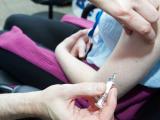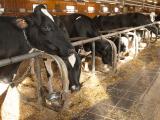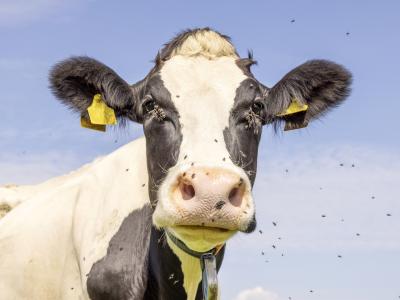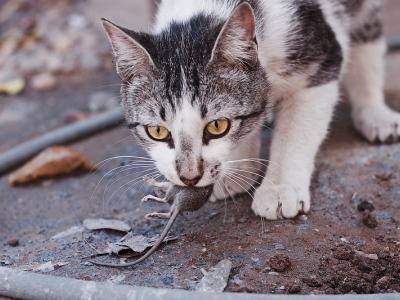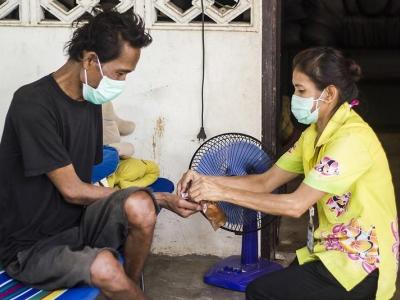Mar 15, 2011
Egyptian woman dies from H5N1
Egypt's health ministry recently announced that a 38-year-old woman from Ismalia governorate died from an H5N1 avian influenza infection, the World Health Organization (WHO) reported today. After getting sick on Mar 1, she was hospitalized on Mar 7, listed in critical condition, and placed on a ventilator. She died on Mar 11. An investigation found she had been exposed to sick poultry. The WHO said the woman's illness and death raise Egypt's H5N1 total to 130 cases, including 44 fatalities. So far this year Egypt has reported 10 H5N1 infections and 3 deaths. The latest Egyptian case raises the world's H5N1 count to 533 cases.
Mar 15 WHO statement
H5N1 strikes farms in Japan, India
Japan, which is in the midst of earthquake and nuclear plant emergency responses, recently reported more H5N1 avian influenza outbreaks at poultry farms. Officials in Chiba prefecture said the virus was confirmed at a poultry producer in Chiba city after a few birds were found dead on Mar 12 and 13, Kyodo News reported. The remaining 35,000 birds were culled, and authorities have banned the movement of poultry in a 10-km radius around the farm. Japan has battled H5N1 in poultry and wild birds over the past few months, and this is the first outbreak to strike Chiba, Japan's second largest poultry-producing area. Meanwhile, in a Mar 11 report to the World Organization for Animal Health (OIE), Japan reported three more H5N1 outbreaks on commercial poultry farms in three other prefectures: Mie, Nara, and Miyazaki. The outbreaks started between Feb 26 and Mar 3, killing 119 birds, with 372,881 more culled to stop the virus. Elsewhere, H5N1 struck a
poultry-breeding farm in Ghandigam, India, according to a Mar 14 report from Vetsweb, an industry news service based in the Netherlands. The virus killed 380 of the farm's 4,000 birds, and the remaining poultry were culled. Ghandigam is in Tripura state in northeastern India.
Mar 14 Kyodo News story
Mar 11 OIE report
Australia to monitor children for flu-vaccine reactions
A group of 600 children in Australia will receive special monitoring for adverse reactions to this season's influenza vaccine, in the wake of a rash of adverse events last year, a health official announced today. Australia's national immunization program, which provides free flu shots for everyone older than 6 months, began today, the Australian Broadcasting Corp. (ABC) reported. The story noted that dozens of children in Australia had serious reactions to the Fluvax vaccine made by CSL Ltd. last year. Two other vaccines will be used in small children this year. Paul Armstrong, Western Australia's director of communicable disease control, said authorities will closely monitor a sample group of 600 children this year by interviewing their parents, according to the story. Last year the rate of fever and convulsions in Australian children under 5 who received Fluvax was about 9 per 1,000 vaccinated, versus a normal rate of less than
1 in 1,000. In an online statement, CSL said it has been unable to find an explanation for the increase. Because of the problem, the company has not sought approval for use of Fluvax in children under age 5 for the 2011 Southern Hemisphere flu season. The company also noted that fever and related symptoms were reported in some 5- to 8-year-olds who received Fluvax last year, and as a result, the vaccine is not recommended for that age-group unless there is no alternative. CSL said it is collaborating with pediatric research centers in Australia this year to monitor flu vaccine use in 600 children aged 5 to 18; it was not clear if this is the same sample referred to in the ABC story.
Mar 15 ABC story
Jun 1, 2010, CIDRAP News story on adverse events
CSL statement
updated Mar 10
China's flu center designated as WHO collaborator
China's National Influenza Center has been designated as a World Health Organization (WHO) Collaborating Centre for Reference and Research on Influenza, making China the first developing country to host such a center, China Daily reported today. The center, part of the Chinese Center for Disease Control and Prevention, joins the WHO's collaborating influenza centers in Australia, Japan, the United Kingdom, and the United States. "This designation reflects the country's exceptional contribution to the global fight against influenza," Dr Shin Young-soo, the WHO regional director for the Western Pacific, was quoted as saying. He spoke in Beijing yesterday at a ceremony marking the designation. Shu Yuelong, who heads the center, said it, like the other collaborating centers, will train medical personnel from other countries and issue timely warnings on flu outbreaks, according to the story. He also said the designation will benefit
both China and the rest of the world. "Unlike before, we can now get firsthand information from other collaborating centers on global influenza surveillance and studies, which will help us better shape our responses to the disease," he said. "This will also help the homegrown flu-vaccine industry tap the global market."
Mar 15 China Daily story
Study finds adjuvanted 2009 H1N1 vaccine safe in Italy
Italian data on the safety of the MF59-adjuvanted pandemic 2009 H1N1 influenza vaccine used in Italy showed it to be well tolerated, according to a report in Vaccine. Researchers explored 1,330 reports of adverse events (AEs) from October 2009 to June 2010 and found that 1,162 (87.4%) were "non serious," 91 (6.8%) were "serious," 3 (0.2%) involved a fatal outcome, and 74 (5.6%) did not specify the degree of seriousness. Among the serious AE reports were 2 life-threatening events such as stroke, 5 hospitalizations or prolongations of hospitalization, 5 fetal deaths, 1 persistent or significant disability, and 1 birth defect. Of the 21 serious AEs detailed in the study, 11 were determined to be possibly linked to the vaccine, with the rest labeled as unlikely to be linked, unrelated, or unclassifiable. One of the three deaths in patients receiving vaccine was attributed to acute meningoencephalitis, and the other two to
cardiac arrest. Though the authors say the question of vaccination during pregnancy should be further explored, they conclude that the 2009 H1N1 vaccine in Italy "has a well-tolerated safety profile which resembles that of the already available seasonal influenza vaccines."
Mar 12 Vaccine abstract


